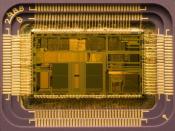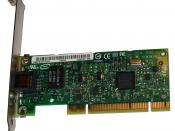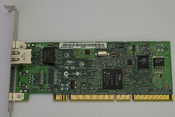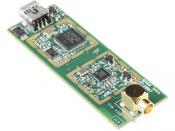The table below describes possible reasons for a slow LANand the solution/s that could assist an IT Professional in correcting the slownessReasons/ SolutionsRAM in workstations1. Upgrade the amount of RAM2. Replace with a higher speed RAM3. Ensure the available RAM exceeds the minimum required for all applications4. Increase the size of the virtual memoryCPU in workstations1. Upgrade to a faster CPU2. Upgrade to a CPU with a larger on board cache3. Ensure the CPU cooling exceeds the levels required by the manufacturerIncrease in number of nodes1. Segment the network spacing the nodes the nodes out equally across the segments2. Fill the segments as equally as possible considering bandwidth consumption, both average and peak3. Replace older 10/100 BaseT with Gigabit hardware4. Replace backbone CAT5 with CAT6 or Fiber5. Replace hubs with switches for better pass thru and handlingIncrease in traffic and loading1. Balance the traffic using either applications or segmenting2. Replace older 10/100 BaseT with Gigabit hardware3.
Replace backbone CAT5 with CAT6 or Fiber4. Replace hubs with switches for better pass thru and handling5. Segment traffic intensive applications such as VOIP from regular traffic6. Throttle bandwidth intensive applications7. Schedule bandwidth intensive applications to run off hours8. Implement load balancing servers9. Verify all firewalls are properly configured to only allow necessary traffic throughUpgrades in applications1. Do not have wide disparity in application versions2. Update all patches and service packs on a routine basis3. Reanalyze the minimum requirements for new versions and ensure all machines meet those requirements4. Remove or upgrade all applications that are no longer supported by the vendor5. Ensure machines have the latest hardware drives and that the drivers meet the requirements of the applications6. Turn off all bandwidth intensive options until they are proven necessaryNew applications1. Ensure all machines running the software exceed the minimum requirements2. Turn off all bandwidth intensive options until they are proven necessary3. Update all patches and service packs on a routine basis4. Verify all firewalls are properly configured to only allow necessary traffic throughIncrease in graphics use1. Consider moving hosted graphic intensive applications to a unique server2. Segment high graphic users from regular traffic3. Consider nightly transport of graphic files to the local machines versus real-time accessConfiguration problems1. Scan network to locate configuration issues and fix either remotely or locally2. Standardize the load image to ensure machines are properly configured3. Lock down configuration files to prevent local changes4. Prevent users from modifying registry and system files5. Make sure machines are pointing to the proper DNS server and gateway] Source: http://www.associatedcontent.com/article/578747/slow_lan_reasons_and_solutions.html?cat=15





